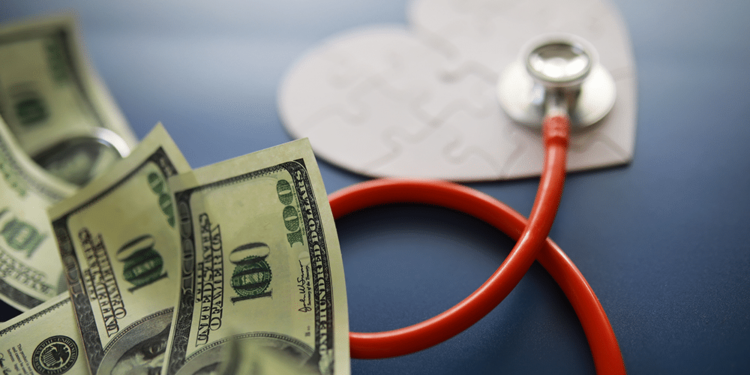Healthcare is supposed to be about healing, not haggling over unpaid bills. Yet, for millions of patients and providers alike, the reality is quite different. Medical debt has become a growing crisis in the U.S., with hospitals and healthcare providers struggling to recover billions of dollars in unpaid expenses.
But there’s a shift happening. New-age medical debt collection software is revolutionizing the way healthcare organizations approach billing and debt recovery. No longer is debt collection just about relentless phone calls and aggressive tactics. It’s becoming smarter, more compassionate, and, most importantly, more effective.
The Hidden Crisis of Unpaid Medical Bills
For many Americans, a trip to the emergency room comes with an unexpected side effect—staggering medical bills. In fact, studies show that medical debt is the leading cause of personal bankruptcy in the United States. Even those with insurance can find themselves drowning in out-of-pocket costs.
From the provider’s perspective, unpaid bills translate into financial strain. Hospitals operate on tight budgets, and when revenue leaks due to unpaid invoices, it impacts everything from staffing to patient care quality. This makes medical debt collection software not just an option but a necessity.
Why Traditional Debt Collection Methods Fail in Healthcare
Historically, medical debt collection has been handled through manual processes, third-party collection agencies, and, in some cases, legal action. However, these methods often create more problems than they solve:
- Outdated Communication Methods: Patients rarely answer unknown phone numbers, making phone call-based collections inefficient.
- Lack of Personalization: Generic collection letters fail to consider each patient’s financial situation, leading to frustration and non-payment.
- Negative Patient Experience: Aggressive collection tactics can damage a healthcare provider’s reputation and patient trust.
Clearly, a more sophisticated, patient-friendly approach is needed.
The Tech-Driven Approach: How Medical Debt Collection Software Changes the Game
1. Automating and Streamlining the Collection Process
Modern medical debt collection software automates much of the tedious work involved in tracking and collecting unpaid bills. Instead of relying on human agents to manually reach out to patients, the software sends personalized reminders via text, email, and even chatbots.
These automated nudges help patients stay informed about their outstanding balances without the pressure of a confrontational phone call.
2. AI-Powered Patient Segmentation
Not all patients with overdue bills are the same. Some may be facing temporary financial hardships, while others might simply have forgotten to pay. AI-driven debt collection software can analyze patient data and segment individuals based on their payment history, financial standing, and likelihood of repayment.
By tailoring communication and payment options to each group, healthcare providers can see significantly higher recovery rates.
3. Offering Flexible and Compassionate Payment Plans
One of the biggest reasons patients don’t pay their medical bills on time is affordability. Instead of demanding lump-sum payments, smart collection software enables healthcare providers to offer flexible, interest-free payment plans.
Patients are far more likely to make small, manageable payments over time than to ignore a large bill they cannot afford.
4. Seamless Integration with EHR and Billing Systems
Gone are the days when collection efforts operated separately from a hospital’s main billing system. Today’s medical debt collection software integrates with electronic health records (EHR) and existing financial platforms, creating a seamless process from billing to collections.
This integration reduces errors, improves efficiency, and ensures that patients receive clear, consistent communication about their medical expenses.
5. Compliance and Data Security
Medical debt collection comes with a unique set of legal and ethical considerations. Compliance with HIPAA (Health Insurance Portability and Accountability Act) and the Fair Debt Collection Practices Act (FDCPA) is critical.
Advanced medical collection platforms ensure that all patient communications adhere to legal guidelines, protecting both the patient and the healthcare provider from potential lawsuits or privacy violations.
The Future of Medical Debt Collection: AI, Blockchain, and Beyond
As technology continues to evolve, we can expect even greater innovations in the way medical debt is managed. Some emerging trends include:
- AI Chatbots for Patient Communication: AI-powered assistants can answer billing questions and guide patients through payment options 24/7.
- Blockchain for Transparent Billing: Blockchain technology could enhance transparency in medical billing, reducing disputes and errors.
- Predictive Analytics for Debt Prevention: Instead of just recovering debt, future solutions may predict which patients are at risk of non-payment and offer preemptive financial assistance.
A Win-Win for Patients and Providers
The ultimate goal of modern medical debt collection software isn’t just to collect money—it’s to create a fair, transparent, and patient-friendly system that benefits everyone involved.
For healthcare providers, the benefits are clear:


For patients, it means:


The healthcare industry is at a turning point. With the right tools and strategies, we can move beyond outdated collection methods and embrace a smarter, more compassionate approach to medical debt recovery.
Because at the end of the day, healthcare should be about healing—not financial hardship.






